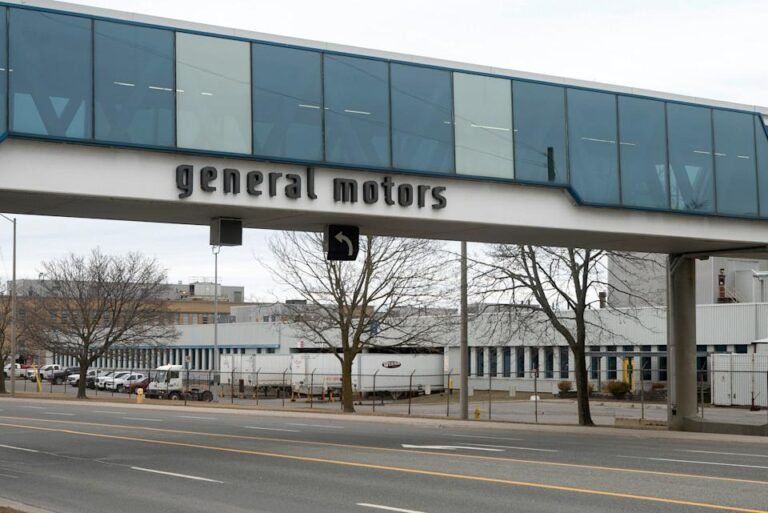
As U.S. President Donald Trump escalates his rhetoric on trade, Canadian auto workers are bracing for impact. On April 24, 2025, Trump warned that the existing 25% tariffs on Canadian-made cars could increase, while also reviving his provocative suggestion that Canada could become the 51st U.S. state. This latest salvo, coming just days before Canada’s federal election, has sent shockwaves through the auto industry, which employs over 125,000 Canadians directly and supports countless more through supply chains. From Windsor to Oshawa, workers are ‘holding our breath,’ uncertain about their livelihoods as the threat of higher tariffs looms large. This blog dives into the crisis, its implications, and what it means for Canada’s auto sector.
Why the Tariff Threat Matters
Trump’s tariff threats aren’t new, but their timing is critical. Canada’s auto industry, a cornerstone of its economy, exported $56 billion in vehicles to the U.S. in 2024, accounting for 92% of its production. Higher tariffs could cripple this trade, raising costs for manufacturers like Stellantis and General Motors, who operate major plants in Ontario. Workers like Sarah Mitchell, a 15-year assembly line veteran in Brampton, feel the pressure. “We’re just waiting to see if our jobs will still be here next year,” she told CBC News. The uncertainty is already biting—layoffs have begun at some plants, with Magna International reporting reduced shifts in Quebec.
The ripple effects are profound. Suppliers, dealerships, and small businesses tied to the industry face a domino effect. Economists warn that a 10% tariff hike could slash Canada’s GDP by 0.5%, costing thousands of jobs. Trump’s rhetoric about Canada as a “state” adds a political sting, fueling fears of economic coercion.
‘Holding Our Breath’: A Sector Under Siege
The phrase ‘holding our breath’ captures the mood in factory towns. In Windsor, where Chrysler employs 4,500, union leaders are rallying workers to prepare for worst-case scenarios. Unifor, Canada’s largest auto union, has called Trump’s threats “economic blackmail.” President Lana Payne emphasized, “Our members built this industry with their sweat. We won’t let it be dismantled by political games.” Yet, the reality is grim. If tariffs rise to 35%, as Trump has hinted, production costs could spike, forcing companies to cut jobs or relocate south.
Here’s a snapshot of the stakes:
- Jobs at Risk: Over 125,000 direct auto jobs, plus 400,000 indirect roles in supply chains.
- Economic Impact: A 35% tariff could reduce Canada’s auto exports by 20%, per the C.D. Howe Institute.
- Key Regions: Ontario (80% of auto production), Quebec (parts suppliers), and Alberta (logistics) are most vulnerable.
- Consumer Costs: Higher tariffs could increase car prices by $3,000-$5,000, hitting Canadian buyers hard.
The human toll is real. In Oshawa, single father Mike Reynolds, a GM worker, fears for his kids’ future. “If the plant slows down, I don’t know how I’ll pay the bills,” he said at a recent town hall.
Political and Economic Responses
Canada’s government isn’t standing still. Prime Minister Justin Trudeau, facing an election, has vowed to protect the auto sector. On April 26, 2025, he announced a $2 billion fund to support retooling plants for electric vehicles (EVs), aiming to make Canada’s industry more competitive. But with polls showing a tight race, the incoming government—whether Liberal or Conservative—will face intense pressure to negotiate with Trump. Analysts suggest Canada could retaliate with tariffs on U.S. goods like energy or agriculture, but such moves risk escalating a trade war.
Across the border, Trump’s base cheers his hardline stance. Posts on X reflect this, with users like @MarkWerling5 noting Trump’s “credible threat” to Canada’s economy. Yet, U.S. consumers could also suffer, as higher car prices hit wallets. The U.S.-Mexico-Canada Agreement (USMCA), meant to stabilize trade, now feels fragile. Experts like Flavio Volpe, president of Canada’s Automotive Parts Manufacturers’ Association, urge diplomacy. “We need cool heads to preserve what we’ve built together,” he said on April 28, 2025.
‘Holding Our Breath’: What’s Next?
As the crisis unfolds, Canadian auto workers are caught in a high-stakes waiting game. Will Trump follow through with higher tariffs, or is this posturing to extract concessions? For now, communities are mobilizing. In Brampton, workers have launched petitions urging Ottawa to secure trade exemptions. Universities like Windsor’s are offering retraining programs for EV technologies, hoping to future-proof jobs. But the clock is ticking. If tariffs rise post-election, plants could scale back by mid-2026, per industry forecasts.
The resilience of Canada’s auto workers shines through. At a recent rally in Oakville, 62-year-old welder Maria Costa shared her story: “I’ve seen recessions, strikes, and shutdowns. We always come back stronger.” Her words echo a collective hope, but also a plea for action. Ottawa must balance diplomacy with defense, ensuring the industry that powers so many lives doesn’t falter.
For now, Canada holds its breath, watching the U.S. and its own leaders for signs of relief. The road ahead is bumpy, but the determination of workers like Sarah, Mike, and Maria offers a glimmer of hope. Stay tuned—this story is far from over.